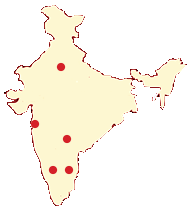Overview

A laminectomy can be performed on all regions (lumbar, thoracic, and cervical) of the spinal column to relieve pressure on the spinal cord or the nerve roots. The lamina is the bony roof of the spinal canal. Laminectomy is the term used to refer to the process of removing the lamina (usually both sides). Removing the lamina increases the size of the spinal canal, giving more room for the spinal cord or nerve roots.
Risks
Surgical Exposure
The patient is placed in the prone position (face down). In this position, there can be pressure sores, pressure injuries to nerves, and injury to the eyes as a result of pressure to them. During surgical dissection, injury to muscle surrounding the spine can occur.
Spinal Cord / Nerve Root injuries:
If there is any injury to the spinal cord in the thoracic area, this could result in paralysis of the lower extremities, as well as loss of bowel, bladder and sexual function. There may be a spinal fluid leak, which could occur after a tear of the covering of the spinal cord or nerve roots. There is a small chance of causing instability.
Risks of tumor removal depend to some degree upon the type and location of tumor.
 If a tumor is epidural (surrounding the tough covering of the spinal cord), the cord itself does not need to be entered.
If a tumor is epidural (surrounding the tough covering of the spinal cord), the cord itself does not need to be entered.
 If a tumor is intradural extramedullary (within the covering of the spinal cord but outside of the spinal cord itself), there are some increased risks because the delicate spinal cord must be exposed, and the risk of postoperative spinal fluid leaks increases.
If a tumor is intradural extramedullary (within the covering of the spinal cord but outside of the spinal cord itself), there are some increased risks because the delicate spinal cord must be exposed, and the risk of postoperative spinal fluid leaks increases.
 If a tumor is intradural intramedullary (within the covering of the spinal cord and within the spinal cord itself), the risks are highest. In order to gain access to the tumor within the spinal cord, the cord must be opened. The surgeon will attempt to open the cord in the least dangerous area possible, but some normal tissue must be passed through to get to the tumor. This will result in some type of neurological deficit, although it may be very small. For example, there might be numbness over a portion of the chest, or there may be some difficulty with the ability to sense position of the a portion of one lower extremity. Or the deficit could be greater.
If a tumor is intradural intramedullary (within the covering of the spinal cord and within the spinal cord itself), the risks are highest. In order to gain access to the tumor within the spinal cord, the cord must be opened. The surgeon will attempt to open the cord in the least dangerous area possible, but some normal tissue must be passed through to get to the tumor. This will result in some type of neurological deficit, although it may be very small. For example, there might be numbness over a portion of the chest, or there may be some difficulty with the ability to sense position of the a portion of one lower extremity. Or the deficit could be greater.
There is also the possibility that only a portion of the tumor may be removed. If the tumor is stuck down to the surrounding spinal cord or nerves, the surgeon may elect to remove a small portion, rather than suffer great risks of nerve or spinal cord injury. And, if the surgeon has achieved a "gross total removal" of the tumor (in which all visible tumor has been removed), there still is the possibility that there may be recurrence of tumor.
General Risks:
These include general difficulties, such as bleeding, infection, stroke, paralysis, coma and death. Incisions on the back generally heal well, but the incision site could be tender, or may heal in an unpleasant manner, with scarring. There is also the possibility that the surgery may not relieve the symptoms for which the procedure was performed. The problem for which the surgery was performed may recur, requiring additional surgery in the future. In addition, although every attempt is made to protect all areas of the body from pressure on nerves, skin and bones, injuries to these areas can occur, particularly with prolonged cases.
Risks Of Anesthesia:
Blood clots in the legs, heart attacks, reaction to the anesthetic, reaction to blood transfusion, if given.
Procedure Risks
Posterior thoracic laminectomy for removal of spinal cord tumors may have moderate risks. Risks can be broken down into two categories, 1) those related to the operative site, and 2) those related to the risks of anesthesia.
For more information, medical assessment and medical quote
as email attachment to
Email : - info@wecareindia.com
Contact Center Tel. (+91) 9029304141 (10 am. To 8 pm. IST)
(Only for international patients seeking treatment in India)










